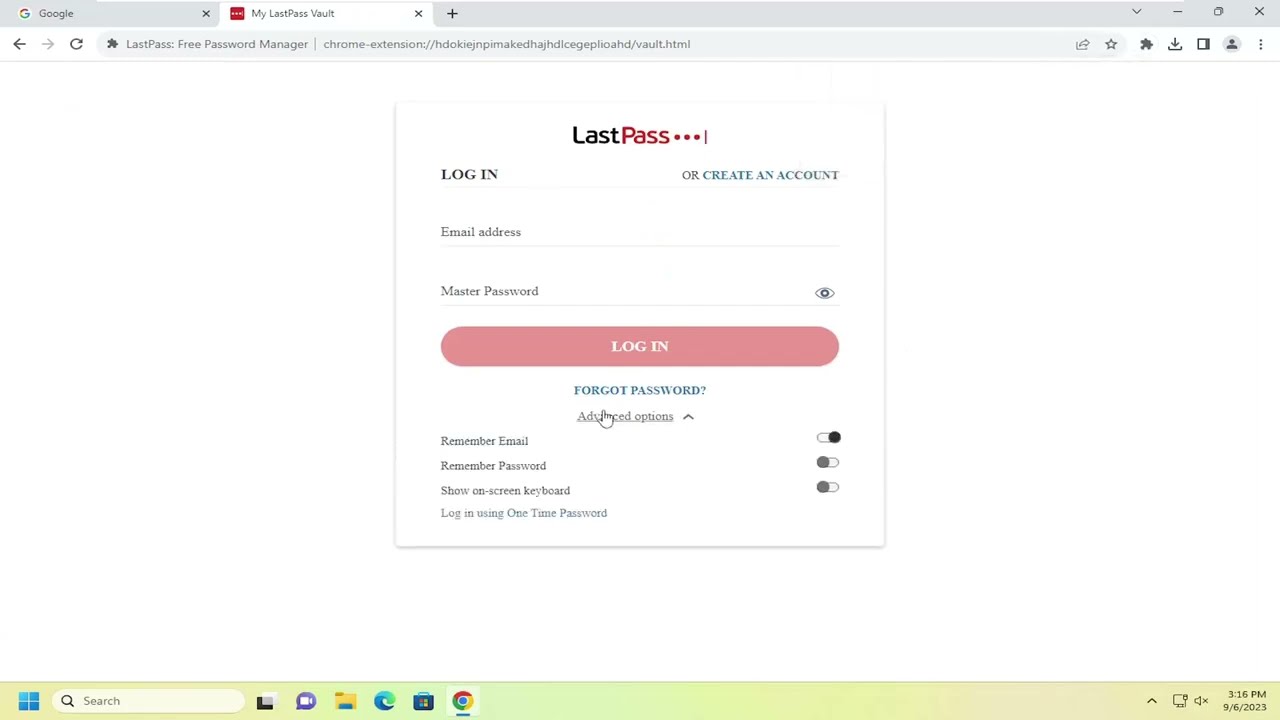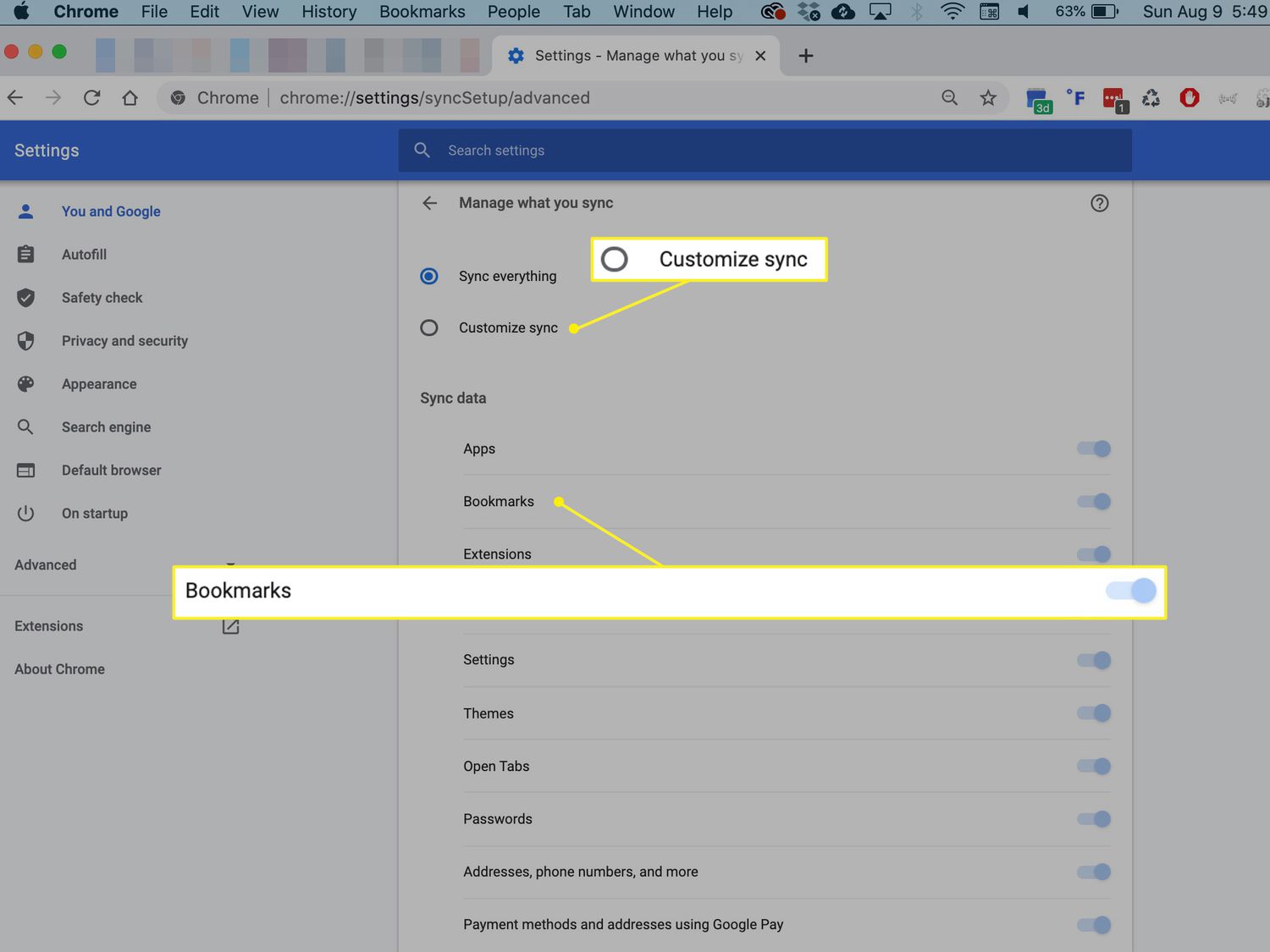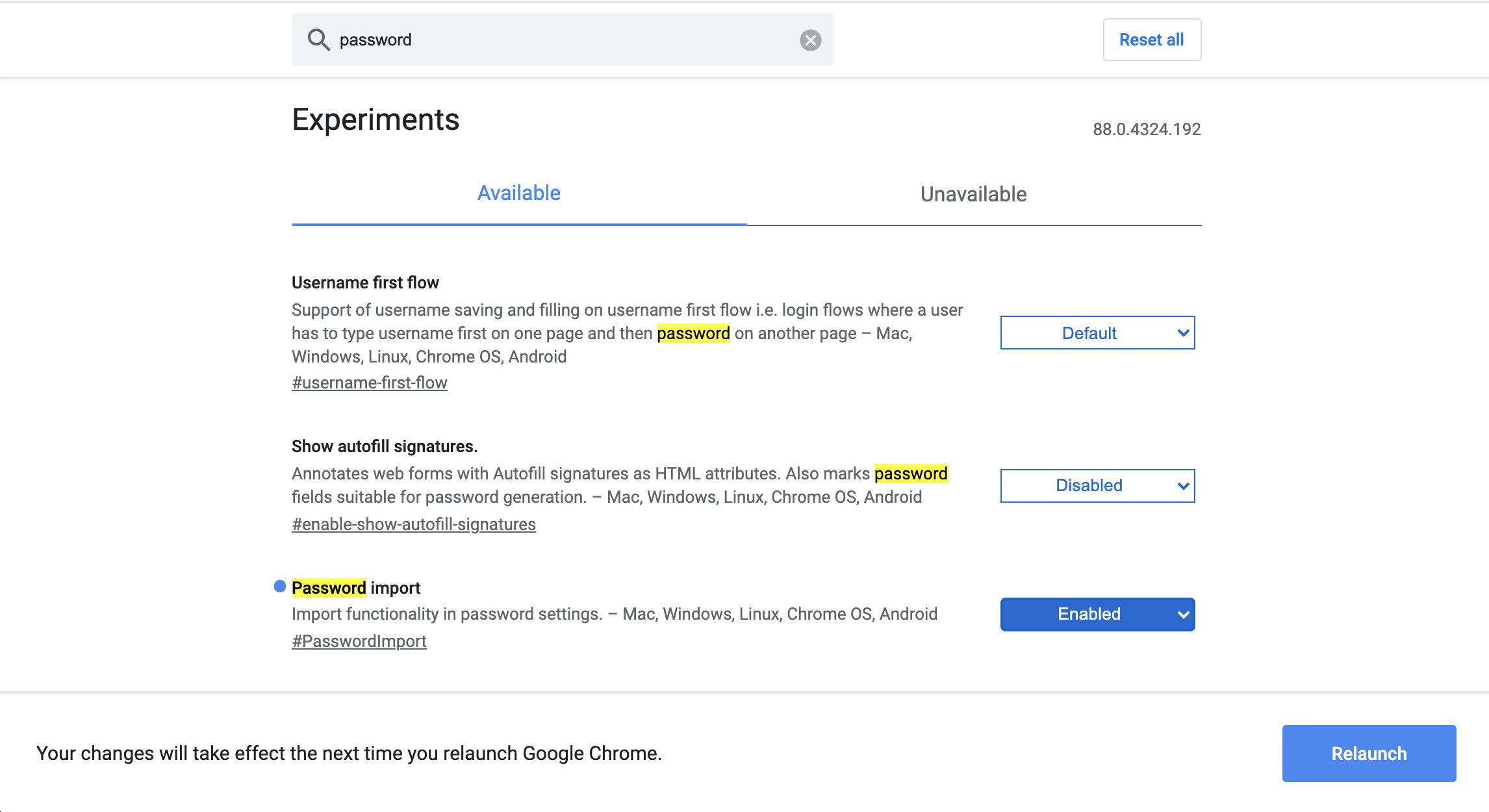Introduction
Adding passwords to Chrome manually can be a convenient way to keep track of your login credentials for various websites. While Chrome usually prompts you to save passwords when you log in, there are instances when you might need to add a password manually. This could be for a website that doesn't prompt the password save option, or for a password you want to add without logging in. Fortunately, Chrome provides a straightforward method to manually add passwords, ensuring that your sensitive information is securely stored and easily accessible.
By following a few simple steps, you can input your website login details into Chrome, allowing for seamless access to your accounts without the hassle of repeatedly entering your credentials. Whether you're managing multiple accounts or simply prefer to have your passwords readily available, manually adding passwords to Chrome can streamline your online experience.
In the following sections, we will walk through the step-by-step process of manually adding a password to Chrome. From accessing the Chrome settings to entering the website, username, and password details, you'll gain a comprehensive understanding of how to effectively manage your login credentials within the Chrome browser. Let's dive into the details and discover how to effortlessly incorporate passwords into Chrome's secure storage system.
Step 1: Open Chrome Settings
To begin the process of manually adding a password to Chrome, the first step is to access the Chrome settings. This can be easily accomplished by clicking on the three-dot menu icon located in the top-right corner of the browser window. Upon clicking the icon, a drop-down menu will appear, presenting a variety of options for customizing and managing the Chrome browser.
Once the drop-down menu is displayed, navigate to the "Settings" option and click on it. This action will redirect you to the Chrome settings page, where you can explore and modify various aspects of the browser's functionality. The settings page is designed to provide users with a centralized location for adjusting preferences, managing extensions, and accessing advanced configurations.
Upon reaching the settings page, you will encounter a range of categories on the left-hand side, such as "Privacy and security," "Autofill," "Advanced," and more. These categories serve as organizational sections that house specific settings and options related to different aspects of the Chrome browser. To proceed with adding a password manually, it's essential to familiarize yourself with the layout of the settings page, as it will facilitate a smooth navigation experience.
By accessing the Chrome settings, you gain the ability to delve into the inner workings of the browser, enabling you to customize its behavior and manage various features according to your preferences. This level of control empowers users to tailor their browsing experience, ensuring that it aligns with their individual needs and security considerations.
In summary, opening the Chrome settings marks the initial step in the process of manually adding a password to the browser. This fundamental action sets the stage for the subsequent steps, allowing users to navigate through the settings interface and access the necessary options for incorporating new passwords into Chrome's secure storage system. With the settings page at your disposal, you are poised to embark on the journey of enhancing your password management capabilities within the Chrome browser.
Step 2: Click on "Passwords"
After accessing the Chrome settings in the previous step, the next crucial action in the process of manually adding a password to Chrome involves navigating to the "Passwords" section. This step is pivotal in facilitating the seamless integration of new login credentials into Chrome's password management system.
Upon entering the Chrome settings, you will encounter a list of categories on the left-hand side of the settings page. Among these categories, you will find "Passwords" – a dedicated section designed to centralize the management of saved passwords within the browser. To proceed, simply click on the "Passwords" option, which will direct you to the password management interface.
Clicking on "Passwords" grants you access to a comprehensive overview of the passwords saved within Chrome. This section serves as a secure repository for all the login credentials you have chosen to store, offering a convenient way to review, edit, and add new passwords. By clicking on this option, you are presented with a clear and organized view of your saved passwords, empowering you to efficiently manage and update your login information.
The "Passwords" section not only provides a repository for your saved credentials but also offers additional functionalities, such as the ability to search for specific passwords, delete outdated entries, and, most importantly, add new passwords manually. This centralized hub for password management streamlines the process of maintaining and updating your login details, ensuring that you have full control over your stored credentials.
By clicking on "Passwords," you are seamlessly guided to the heart of Chrome's password management capabilities, where you can effortlessly navigate through your saved passwords and initiate the process of adding new credentials. This pivotal step sets the stage for the subsequent actions, allowing you to seamlessly progress towards incorporating your desired login information into Chrome's secure password storage system.
In essence, clicking on "Passwords" within the Chrome settings marks a significant milestone in the journey of manually adding a password to the browser. This action opens the door to a realm of password management functionalities, empowering you to efficiently organize, update, and expand your collection of saved credentials within the Chrome browser.
Step 3: Click on "Add"
Upon accessing the "Passwords" section within the Chrome settings, the next pivotal step in the process of manually adding a password to Chrome involves clicking on the "Add" button. This action serves as the gateway to initiating the incorporation of new login credentials into Chrome's secure password storage system.
When you click on the "Add" button within the "Passwords" section, you are presented with a streamlined interface that facilitates the seamless input of website login details. This intuitive interface is designed to capture essential information, including the website URL, username, and password, enabling you to efficiently populate Chrome's password repository with your desired credentials.
By clicking on "Add," you are prompted to enter the specific details of the website for which you intend to add a password. This includes providing the website's URL or domain, ensuring that the password is associated with the correct online destination. Additionally, you are prompted to input the corresponding username or email address associated with the website, allowing for accurate identification and retrieval of the login credentials.
Furthermore, the "Add" interface prompts you to enter the password for the specified website, completing the trio of essential details required for seamless access. This step is crucial in ensuring that your login information is accurately captured and securely stored within Chrome, ready for effortless retrieval whenever you visit the associated website.
The "Add" functionality within the "Passwords" section streamlines the process of manually inputting new login credentials, offering a user-friendly and efficient approach to expanding Chrome's password repository. By clicking on "Add," you gain access to a purpose-built interface that simplifies the task of incorporating website-specific login details, empowering you to seamlessly expand and manage your collection of saved passwords within the Chrome browser.
In essence, clicking on "Add" within the "Passwords" section represents a pivotal moment in the journey of manually adding a password to Chrome. This action marks the transition from preparation to execution, providing you with a straightforward and intuitive platform for inputting your desired website login credentials into Chrome's secure password storage system.
Step 4: Enter Website, Username, and Password
As you embark on the pivotal step of manually adding a password to Chrome, you will be prompted to enter the specific details of the website for which you intend to add a password. This step is essential in ensuring that your login credentials are accurately captured and securely stored within Chrome's password repository, ready for seamless retrieval whenever you visit the associated website.
Upon clicking on the "Add" button within the "Passwords" section, you are presented with a purpose-built interface that streamlines the process of inputting new login credentials. This intuitive interface is designed to capture essential information, including the website URL, username, and password, enabling you to efficiently populate Chrome's password repository with your desired credentials.
The first piece of information required is the website's URL or domain. It's crucial to ensure that the password is associated with the correct online destination, as this facilitates accurate retrieval and seamless auto-fill functionality when visiting the website. By entering the specific website address, you establish a direct link between the stored password and the corresponding online platform, enhancing the efficiency and accuracy of the password management process.
In addition to the website URL, you will be prompted to input the corresponding username or email address associated with the website. This step is instrumental in accurately identifying and retrieving the login credentials when accessing the website. By providing the associated username, you ensure that the stored password is seamlessly matched with the correct user account, enabling hassle-free login experiences without the need to manually input your credentials each time.
Furthermore, the interface prompts you to enter the password for the specified website, completing the trio of essential details required for seamless access. By inputting the password, you finalize the process of adding the login credentials to Chrome's secure storage system, ensuring that your sensitive information is securely stored and readily accessible whenever you visit the associated website.
In summary, the "Enter Website, Username, and Password" step within the password addition process represents a pivotal stage in expanding Chrome's password repository. By accurately inputting the website details, username, and password, you establish a seamless connection between your login credentials and the associated website, enhancing the efficiency and convenience of managing your passwords within the Chrome browser.
Step 5: Save the Password
Upon entering the website URL, username, and password into the designated fields, the final and crucial step in the process of manually adding a password to Chrome involves saving the entered credentials. This action ensures that the newly added password is securely stored within Chrome's password management system, ready to facilitate seamless access to the associated website.
After inputting the required website details, including the URL and username, and specifying the corresponding password, you will encounter an option to save the entered information. This pivotal step serves as the definitive action that solidifies the incorporation of the new password into Chrome's secure storage system, ensuring that your login credentials are readily available for future use.
By clicking on the "Save" or "Save Password" button, you affirm the accuracy and completeness of the entered website login details, signaling to Chrome that the provided information should be securely stored for future retrieval. This simple yet significant action streamlines the process of managing your passwords within the browser, allowing for effortless access to your accounts without the need to repeatedly input your credentials.
Saving the password within Chrome's password management system not only enhances convenience but also contributes to a heightened level of security. By securely storing your login credentials, Chrome enables you to benefit from features such as auto-fill and password synchronization across devices, ensuring a seamless and secure browsing experience.
In essence, the act of saving the password represents the culmination of the manual password addition process, signifying the successful integration of the new login credentials into Chrome's password repository. This final step solidifies the seamless incorporation of your website-specific password, empowering you to navigate the online landscape with enhanced convenience and security.
By diligently following the step-by-step process of manually adding a password to Chrome and culminating the journey with the pivotal action of saving the password, you establish a robust foundation for efficient and secure password management within the Chrome browser.

























